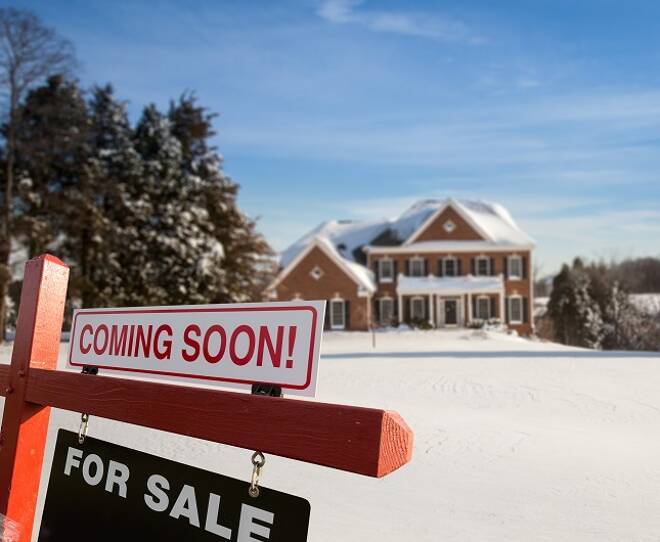Advertisement
Advertisement
U.S Mortgage Rates Fall for a Second Consecutive Week
By:
Mortgage rates fall for a second consecutive week but fail to boost purchase demand, with inventories and rising prices leaving home buyers on the sidelines.
Mortgage rates fell for the second time in 9-weeks in the week ending 15th April. Following a 5-basis points decline from the week prior, 30-year fixed rates fell by 9 basis points to 3.04%.
Compared to this time last year, 30-year fixed rates were down by 27 basis points.
30-year fixed rates were still down by 190 basis points since November 2018’s last peak of 4.94%.
Notably, however, it was just the seventh plus 3% week since July of last year.
Economic Data from the Week
It was quieter first half of the week on the U.S economic calendar.
On the economic data front, March inflation figures were in focus early in the week.
Following the FED’s assurances of unwavering policy support, however, the stats had a muted impact on yields.
In March, the annual core rate of inflation accelerated from 1.3% to 1.6%, rising above a forecasted 1.5%.
Month-on-month, core consumer prices increased by 0.3%, with consumer prices rising by 0.6%.
Freddie Mac Rates
The weekly average rates for new mortgages as of 15th April were quoted by Freddie Mac to be:
- 30-year fixed rates fell by 9 basis point to 3.04% in the week. This time last year, rates had stood at 3.31%. The average fee held steady at 0.7 points.
- 15-year fixed declined by 7 basis points to 2.35% in the week. Rates were down by 45 basis points from 2.80% a year ago. The average fee increased from 0.6 points to 0.7 points.
- 5-year fixed rates slid by 12 basis points to 2.80%. Rates were down by 54 basis points from 3.34% a year ago. The average fee rose from 0.1 point to 0.4 points.
According to Freddie Mac,
- The economy is improving on the demand side and on the supply side, while a variety of goods and materials remain scarce.
- As a result of this imbalance, pricing pressures are building and causing inflation to rise.
- Despite the pause in mortgage rates recently, we expect them to increase modestly for the remainder of the year.
Mortgage Bankers’ Association Rates
For the week ending 9th April, the rates were:
- Average interest rates for 30-year fixed to conforming loan balances decreased from 3.36% to 3.27%. Points decreased from 0.43 to 0.33 (incl. origination fee) for 80% LTV loans.
- Average 30-year fixed mortgage rates backed by FHA decreased from 3.36% to 3.24%. Points rose from 0.36 to 0.40 (incl. origination fee) for 80% LTV loans.
- Average 30-year rates for jumbo loan balances decreased from 3.41% to 3.35%. Points decreased from 0.41 to 0.34 (incl. origination fee) for 80% LTV loans.
Weekly figures released by the Mortgage Bankers Association showed that the Market Composite Index, which is a measure of mortgage loan application volume, fell by 3.7% in the week ending 9th April. In the week prior, the index had fallen by 5.1%.
The Refinance Index declined by 5.0% and was 31% lower than the same week a year ago. The index had also fallen by 5% in the week prior.
In the week ending 9th April, the refinance share of mortgage activity decreased from 60.3% to 59.2%. In the previous week, the share had declined from 60.6% to 60.3%.
According to the MBA,
- Purchase and refinance applications fell, with most of the pullback coming earlier in the week, when rates were higher.
- Treasury yields started last week high – close to the prior week’s level at over 1.7% before falling 6 basis points.
- Refinance activity has now decreased for nine of the past 10-weeks, as rates have gone from 2.92% to 3.27% over the period.
- Last week’s index level was the lowest in over a year, as mortgage rates continue to trend higher.
- Many borrowers have either refinanced at lower rates or are unwilling – or unable – to refinance at current rates.
- A third straight week of declining purchase activity is a sign that rising home prices and tight supply are constraining home sales.
- Purchase applications were still above last year’s pandemic-impacted low point but fell behind the level of activity seen in the same week in 2019.
For the week ahead
It’s a quiet first half of the week on the U.S economic calendar. There are no material stats from the U.S to influence yields.
The lack of stats will leave geopolitics and COVID-19 in focus early in the week.
About the Author
Bob Masonauthor
With over 28 years of experience in the financial industry, Bob has worked with various global rating agencies and multinational banks. Currently he is covering currencies, commodities, alternative asset classes and global equities, focusing mostly on European and Asian markets.
Advertisement
